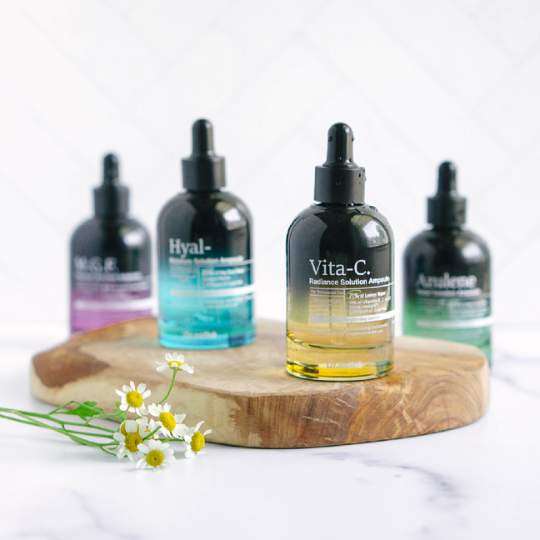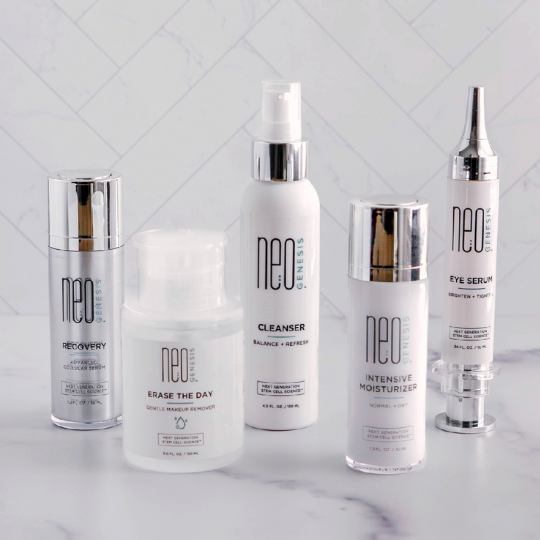I don't enjoy "benching" any skin treatment, so it's tough to imagine skipping a whole season of microneedling.
Talk about summertime blues.
Microneedling is such a powerful treatment in skincare, addressing many concerns, but we need to be mindful of extrinsic factors like the sun, which we know can cause unwanted reactions in our skin. Can we enjoy micro needling's benefits year-round, or should we take a summer vacation?
Microneedling Recap
Microneedling is a minimally-invasive treatment that improves skin by prickling the epidermis with tiny nano-sized, sharp, sterilized needles ranging from 0.1 to 3.0 millimeters. (The allowed needle length differs among estheticians, dermatologists, and physicians.) These minor cuts enhance cellular turnover and promote collagen and elastin production. Woo-hoo! Due to its collagen rejuvenation purposes, we also call it collagen induction therapy.
Microneedling treats many skin conditions and concerns. We use it for wrinkles, acne, hyperpigmentation, enlarged pores, loss of tone, alopecia, stretch marks, and other undesired flaws. However, since minimizing UV exposure following microneedling treatment is necessary to yield results, it poses the question of whether summer months are an appropriate time for sessions.
Reasons to Take a Summer Vacation from Microneedling
If you experience a lot of direct sunlight or live in an environment with high temperatures, microneedling can be a challenging treatment to resume through the summer months. This is because ultraviolet light is more intense during the summer months, which slows down healing time, causing microneedling treatment to be less effective.
Sun exposure and extreme heat are counterproductive to microneedling, especially when treating pigmentation concerns. Your skin will be photosensitive following treatment and more susceptible to unwanted pigmentation. If melanin is produced through sun exposure, the skin observes this as skin damage and will choose to fix this before anything else. This reduces the effects of microneedling or even reverses its benefits.
Unfortunately, skin damage can also occur from sun exposure following treatment—causing post-inflammatory hyperpigmentation and erythema—further delaying healing and setting back our results.
Perspiration is another considerable factor. It's important to be aware that the bacteria present in sweat can lead to breakouts or infections in the small openings created in the skin after microneedling. This can be particularly challenging to prevent in hot weather or humid areas during the summer.
Reasons to Continue Microneedling in the Summer Months
Since microneedling treats skin issues most commonly observed in the summer, it is reasonable to want to continue treatment when you feel you need it most.
For example, enlarged pores become more evident with increased sebum production during warmer months. Similarly, pigmentation caused by the sun is more apparent as we soak in sun exposure. More of the body is also exposed during warmer months, making one more aware of potential treatment areas, particularly if stretchmarks are a concern.
It's beneficial to continue microneedling treatments if you can do it safely, especially when results are gaining momentum with treatments.
The Verdict on Summertime Microneedling
I typically recommend beginning microneedling in the colder months to address these concerns in time for the summer. And that way, you may not need to take a hiatus.
If you're not a fan of sunbathing, don't worry. Microneedling can be effective throughout the year as long as you meet the appropriate conditions.
It is crucial to ensure proper protection from the sun, such as wearing hats and applying sunblock, irrespective of the season. However, during summer, when UV rays are at their most potent, it is advisable to avoid direct exposure to the sun by staying indoors and in the shade. I highly recommend refraining from direct exposure to the sun for a minimum of one week after any treatment.
Secondly, I recommend treatment with a needle length that does not exceed 0.5 millimeters during this time of year to reduce the risk of complications. A shorter needle length minimizes common contraindications during the summer, such as redness and pigmentation. Since larger areas of the body, like the décolletage or thighs, benefit from a needle length of at least 1.5 millimeters, I like to hold off on these areas until the weather cools down.
If you absolutely can't avoid the sun or live in an area with a challenging summertime climate, you can switch to microchanneling—an at-home option— for the summer months. Microchanneling involves less downtime, and while sun exposure is still not recommended following treatment, it's not as detrimental. Accidental sun (think sun exposure in the car or walking short distances) is okay, but continue to minimize exposure as much as possible. Read here for more information on Skin Wand Pro, which is newly available in the store.
Want to get more support with your skincare journey? Join me in the Christine Byer Beauty Club. I offer a 14-Day FREE preview with full access to everything in the Club. Get personalized support for your questions and access savings and the opportunity to win a FREE consultation. If you don't find value in your membership, cancel within 14 days at no charge. Find more great articles like this on my blog, and check out my excellent video content here.








